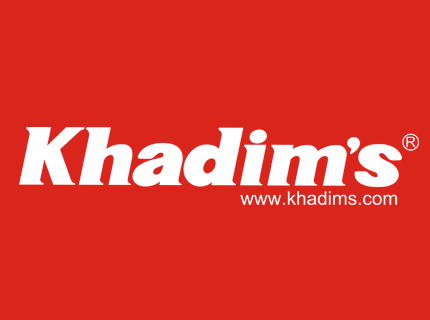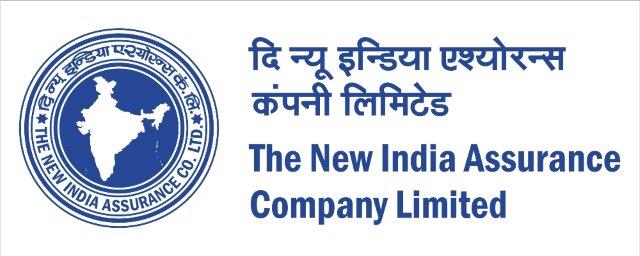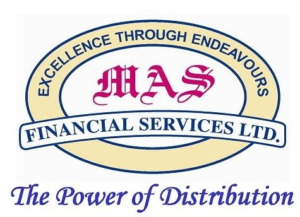Godrej Agrovet Ltd. (GAL) is a well diversified, research and development focused agri-business company with operations across five business verticals i.e. animal feed, crop protection, oil palm, dairy, and poultry and processed foods. GAL is the leading compound animal feed company in India, on the basis of installed capacity for the financial year 2016. In Bangladesh, its joint venture, ACI Godrej was the fourth largest feed producer, in terms of sales volume, during the financial year 2016. It is also the largest crude palm oil producer in India, in terms of market share, as of March 31, 2017.
In animal feed business, GAL’s portfolio of products comprises cattle feed, poultry feed (broiler and layer), aqua feed (fish and shrimp) and specialty feed. Animal feed products are manufactured at 35 facilities, of which 10 facilities are owned and seven are operated by it, located near major consumption centers across India, with an aggregate production capacity of 2.36 million MT per annum, as of June 30, 2017. Company’s pan-India distribution network for animal feed products includes approximately 4,000 distributors, as of June 30, 2017.
In crop protection business, GAL manufactures a wide range of products that cater to the entire crop lifecycle including plant growth regulators, organic manures, generic agrochemicals and specialized herbicides. In October 2015 it acquired a majority equity interest in Astec LifeSciences (ALS) and currently own 56.82% of the outstanding equity shares. ALS manufactures agrochemical active ingredients (technical), bulk and formulations as well as intermediate products and sells its products in India as well as exports them to approximately 24 countries, including the United States and countries across Europe, West Asia, South East Asia and Latin America. ALS also undertakes contract development and manufacturing services for other agrochemical companies. ALS sells all its products to institutional customers, while GAL sells its products primarily to retail consumers. The distribution network of Company’s crop protection business in India includes approximately 6,000 distributors, as of June 30, 2017.
In oil palm business, GAL produces a range of products including crude palm oil, crude palm kernel oil and palm kernel cake. The company purchases fresh fruit bunches (“FFBs”) from palm oil farmers and work closely with them by providing planting material, agricultural inputs and technical guidance. It has entered into memoranda of understanding with nine state governments, which provides the company with access to approximately 61,700 hectares under oil palm plantation, which is equivalent to approximately one-fifth of India’s area suitable for oil palm cultivation, as of March 31, 2017. This public-private partnership model, which, has been promoted by the Government of India, allows GAL to maintain an asset-light business model. The company works closely with farmers in it’s designated area to plant oil palm on their farmland and provide technical guidance and assistance. The company has set up five palm oil mills in India with an aggregate FFB processing capacity of 125 MT per hour and a palm kernel processing capacity of seven MT per hour, as of June 30, 2017. GAL is recognized as the ‘Highest Crude Palm Oil Producer in the Country’.
In dairy business, which it operates through Subsidiary, Creamline Dairy, it sells a majority of milk and milk-based products under the ‘Jersey’ brand across the states of Telangana, Andhra Pradesh, Tamil Nadu, Karnataka and Maharashtra. As of June 30, 2017, it owned and operated nine milk processing units. For dairy business, supply chain network includes procurement from six states through a network of 120 chilling centers, as of June 30, 2017. As on the same date, it’s dairy distribution network included approximately 4,000 milk distributors, approximately 3,000 milk product distributors and 50 retail parlours, as well as direct sales to institutional customers.
GAL also manufactures and market processed poultry and vegetarian products through its brands ‘Real Good Chicken’ and ‘Yummiez’. To grow its poultry and processed foods business, company has entered into a joint venture with Tyson India Holding Limited, a subsidiary of Tyson Foods Inc., U.S.A. This helps GAL with the technical and operational expertise to compete successfully in India. The company has set up two processing plants with integrated breeding and hatchery operations and has a diverse customer base comprising of retail customers as well as institutional clients such as quick service restaurants, fine dining restaurants, food service companies and hotels.
To part finance its repayment/pre-payment of working capital facilities, repayment of commercial paper and general corpus fund needs, GAL is coming out with a maiden IPO for fresh equity issue worth Rs. 300 crore and offer for sale of Rs. 300 crore by Godrej Industries and 12300000 equity shares under OFS by V-Science Investment Pte. Issue is being made via book building route with a price band of Rs. 450 to Rs. 460 for a share having face value of Rs. 10 each. Company has reserved shares worth Rs. 20 crore for eligible employees. Issue opens for subscription on 04.10.17 and will close on 06.10.17. Total issue size is Rs. 1157 crore including pre-IPO placements. Minimum application is to be made for 32 shares and in multiples thereon, thereafter. Post allotment, shares will be listed on BSE and NSE. BRLMs to this offer are Kotak Mahindra Capital Co. Ltd., Axis Capital Ltd. and Credit Suisse Securities (India) Pvt. Ltd. Kavry Computershare Pvt. Ltd. is the registrar to the issue. Having issued initial equity at par in 1991-92, company raised further equity in the price range of Rs. 82 to Rs. 2164.41 per share. It has also issued bonus shares in the ratio of 3 for 1 in March 1994, 6 for 1 in March 2015 and 1 for 1 in March 2017. In September 2017 it issued 192901 shares at a price of Rs. 440 per share under pre-IPO placement, thus the fresh issue size stands reduced to Rs. 291.51 crore (approx 6337390 shares) that includes reserve quota for employees. Post issue, GAL’s current paid up equity capital of Rs. 185.32 crore will stand enhanced to around Rs. 191.66 crore.
On performance front, GAL has (on a consolidated basis) posted turnover/net profits of Rs.3117.42 cr. / Rs. 156.56 cr. (FY14), Rs. 3325.50 cr. / Rs. 210.13 cr. (FY15), Rs. 3817.67 cr. / Rs. 261.09 cr. (FY16) and Rs. 4983.45 cr. / Rs. 274.39 cr. (FY17). For Q1 of the current fiscal, it has reported net profit of Rs. 74.29 crore on a turnover of Rs. 1369.42 cr. It has posted an average EPS of Rs. 10.02 and average RoNW of 23.86% for last three fiscals on a paid up equity capital of Rs.185.13 cr. Issue is priced at a P/BV of 7.88. If we annualize latest earnings and attribute it on fully diluted equity post issue, then asking price is at a P/E of around 30. It has no listed peers to compare with. Issue is priced justifiably considering the diverse activities.
On BRLM’s front, three merchant bankers associated with this issue have handled 42 public issues in past three fiscal years out of which 11 issues closed below the issue price on listing date.
Conclusion: After long, a well diversified company from the house of Godrej is coming with a maiden offer. Company is playing major role in all its verticals and is poised for better prospects. Investment may be considered for short to long term.
The original review is authored by Dilip Davda, appears on Chittorgarh.com and is available here.
 IPO Snapshot:
IPO Snapshot:





 IPO Snapshot:
IPO Snapshot:


 Mas Financial Services Ltd. (MFSL) is a Gujarat-headquartered NBFC with more than two decades of business operations and as of June 30, 2017, it operated across six States and the NCT of Delhi. Its business and financing products are primarily focused on middle and low income customer segments, and include five principal categories: (i) micro-enterprise loans; (ii) SME loans; (iii) two-wheeler loans; (iv) Commercial Vehicle loans (which include new and used commercial vehicle loans, used car loans and tractor loans); and (v) housing loans. MFSL’s shareholders include development finance institutions including FMO and DEG and private equity investors including Sarva Capital.
Mas Financial Services Ltd. (MFSL) is a Gujarat-headquartered NBFC with more than two decades of business operations and as of June 30, 2017, it operated across six States and the NCT of Delhi. Its business and financing products are primarily focused on middle and low income customer segments, and include five principal categories: (i) micro-enterprise loans; (ii) SME loans; (iii) two-wheeler loans; (iv) Commercial Vehicle loans (which include new and used commercial vehicle loans, used car loans and tractor loans); and (v) housing loans. MFSL’s shareholders include development finance institutions including FMO and DEG and private equity investors including Sarva Capital.
